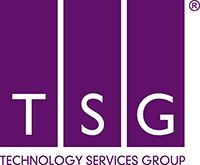The Ultimate Guide to Business Continuity Planning
There is only one guarantee when it comes to the business digital world – change is constant. Having a robust strategy to ensure the seamless operation of your company is paramount. This is where Business Continuity Planning (BCP) steps in, serving as the cornerstone for a resilient and adaptive enterprise. In this comprehensive guide, we’ll delve into the intricacies of BCP, breaking down its essential components, benefits, and steps to create a solid plan that stands strong even in the face of adversity.
What is Business Continuity Planning?
At its core, Business Continuity Planning is the process of creating and implementing strategies to sustain essential business functions during unexpected disruptions. These disruptions can range from natural disasters to cyber-attacks, economic downturns, or even a global pandemic. The goal is to ensure that your organisation can swiftly recover and maintain its critical operations, safeguarding both its reputation and revenue streams.
The Key Benefits of Business Continuity Planning
Navigating through turbulent waters becomes significantly easier when equipped with a well-structured BCP. Firstly, it enhances your company’s resilience, enabling you to adapt to unexpected challenges with poise. Secondly, it minimises downtime, reducing potential revenue losses and maintaining customer trust. Thirdly, BCP can elevate your brand’s image, showcasing your commitment to seamless service, regardless of external circumstances.
In essence, it’s a holistic strategy that strengthens your foundation while allowing you to innovate.
Building Blocks of an Effective Business Continuity Plan
A successful BCP rests on several key building blocks that work in harmony to create a comprehensive strategy. These blocks include Risk Assessment, Business Impact Analysis, Strategy Development, Plan Documentation, Training and Testing, and Continuous Improvement.
- Risk Assessment: This involves identifying potential risks and their potential impact on your business. It’s crucial to have a clear understanding of various threats that could disrupt your operations.
- Business Impact Analysis: Delve into each aspect of your business to identify critical processes and assets. Determine their interdependencies and the potential consequences of their disruption.
- Strategy Development: Based on the risks and impact analysis, develop strategies to mitigate risks, allocate resources efficiently, and prioritise recovery efforts.
- Plan Documentation: Document every facet of your BCP, from strategies and processes to roles and responsibilities. Having clear documentation ensures everyone is on the same page during a crisis.
- Training and Testing: Regularly train your employees on BCP protocols and conduct simulations to test the effectiveness of your plan. This hands-on approach ensures that your team is well-prepared to execute the plan when needed.
- Continuous Improvement: Business continuity is an ongoing process. Regularly review and update your plan to reflect changes in your business, technology, and the risk landscape.
Crafting Your Business Continuity Strategy
Creating an effective business continuity strategy requires a strategic approach and a keen understanding of your organisation’s unique needs.
Begin by defining your recovery objectives—how quickly do you need to bounce back? Determine your Recovery Time Objective (RTO) and Recovery Point Objective (RPO) to guide your strategy.
- Recovery Time Objective (RTO): This crucial metric outlines the maximum acceptable downtime for each critical business function after a disruption. It represents the time your organisation can afford to be without a specific process before its absence starts causing severe damage. For instance, a financial institution might have a low RTO for transaction processing to minimise financial losses, while a creative agency may have a more flexible RTO for non-critical administrative tasks.
- Recovery Point Objective (RPO): As a companion to RTO, the Recovery Point Objective defines the maximum allowable data loss in the event of a disruption. It determines the frequency of data backups and restoration processes needed to minimise data loss. For example, an e-commerce company might have a frequent data backup schedule to ensure minimal loss of customer transactions, while a consulting firm may have a less frequent backup schedule for non-critical documentation.
Then, establish a clear chain of command, designating responsibilities to individuals who will steer the ship through the storm.
Plan Implementation and Training
Even the best plan is useless without proper implementation and training. Assign specific roles to individuals and provide them with the necessary training to execute their duties effectively. Regularly conduct drills and simulations to ensure everyone knows their role and is comfortable with the procedures.
Remember, practice makes perfect, and in a crisis, confidence and familiarity can make all the difference.
Continuous Monitoring and Improvement
Business continuity planning is not a one-and-done endeavour. The business landscape evolves, and so should your BCP. Regularly assess the effectiveness of your plan through post-incident reviews and incorporate lessons learned. Update your plan to accommodate changes in technology, staff, and risks.
By nurturing a culture of continuous improvement, you ensure your BCP remains robust and responsive.
A Business Continuity Plan Is Essential For Your Business
Business Continuity Planning is the compass that guides your organisation through the choppy waters of uncertainty. It’s not just a document; it’s a mindset—a commitment to your company’s sustainability and success. By following the steps outlined in this guide, you can create a resilient strategy that empowers your team to weather any storm, emerging stronger and more adaptable than ever before.
Remember, the key to success lies not in avoiding challenges, but in embracing them with preparation and confidence.
Join us for our latest Risk & Security for Businesses sessions
With evolving risks to most organisations, we understand how important it is to prevent, detect and respond to the concerns that impact your business. This is why over the coming months we have a series of educational sessions covering important security and risk management topics. The series is designed to provide valuable insights and practical tips for those concerned about security threats and risks.
You can register for the sessions below.
Risk & Security events Learn more about our Risk & Security servicesAnalysing your data with Qlik; Dashboard Starter Packs for Sage and Pegasus
Event date passed - Available on demand
Identify Cyber Security Gaps with Penetration Testing
Windows 10 Reaches End of Support on 14th October 2025: What this means to your organisation
Optimising Business Processes: A Guide to Microsoft Dynamics 365 Business Central Features
Microsoft Dynamics 365 BC | How an ERP solution can transform your business processes
Event date passed - Available on demand


